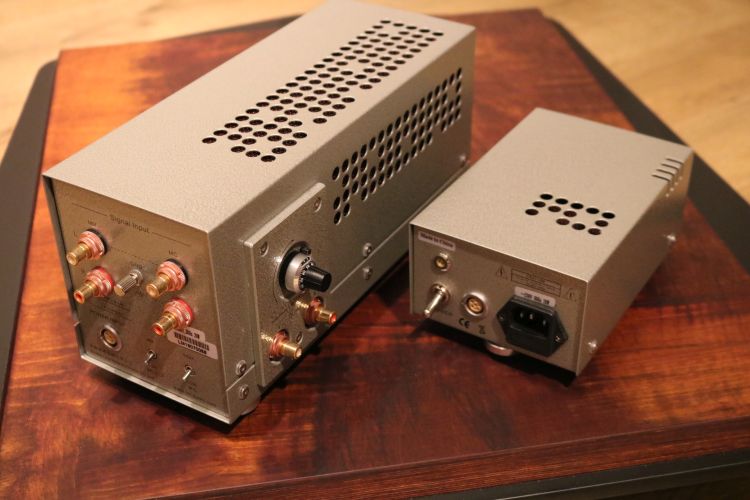
Review sample supplied by A Tube High Fidelity
Retail price in the Netherlands (incl 21% VAT): 1.989 euro
Highly anticipated by many, myself included, the Line Magnetic LP-33 has recently become available in the Netherlands. It is so hot of the presses that it is not even on the manufacturer’s website yet and precious info is available online. That will surely be only a matter of time.
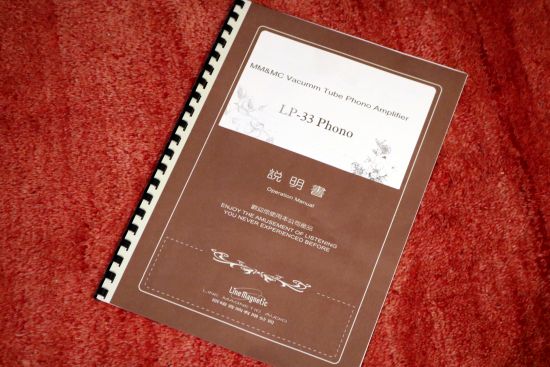
The unit does come with a nice printed manual but since some specs therein seem strange and it contains a section that actually pertains to power amplifiers, I’m taking the data therein with a pinch of salt. Maybe they’ll issue a revision. Then again, how much info does one really need for a phono preamp? After all: the proof of the pudding is in the eating. And, folks, this pudding sure is nice.
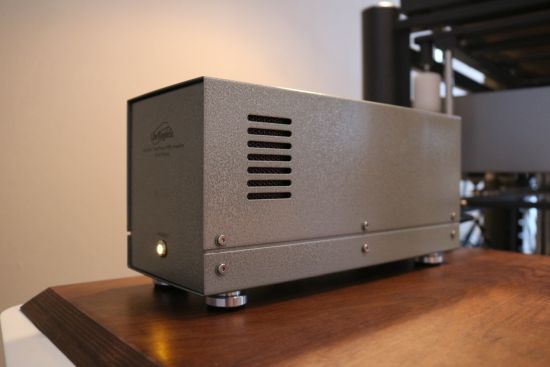
The LP-33 phono stage uses a separate power supply and my two review units are finished in the unique Line Magnetic-typical laboratory-style grey hammered paint. The units will also be available in other colors.
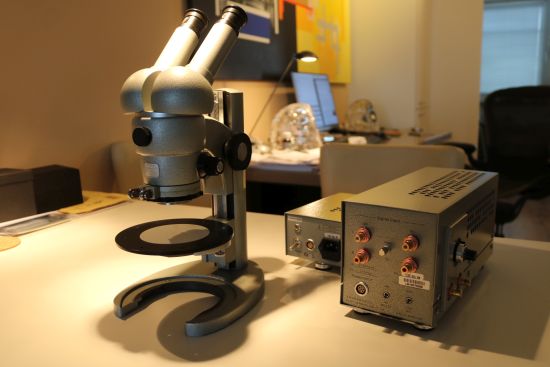
According to the manual, the amplification section uses 3 carefully-matched ECC803S tubes and a 6Z4 tube. For coupling the circuit to the outputs, German Mcap coupling capacitors are used and for the filtering, Japanse Nichicon & Rubycon are used. Further, high permeability EL-19 nickel and permalloy shells are used to comprise multi-layer shielding.
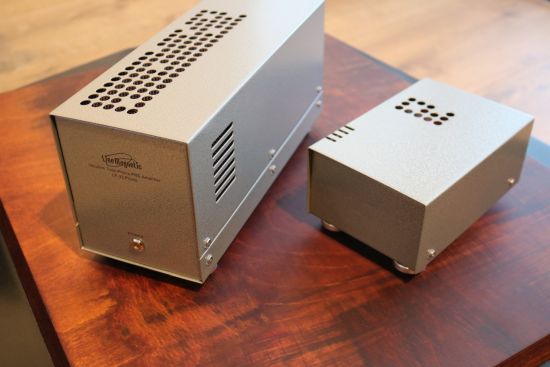
The LP-33 has independent inputs for MC and MM cartridges allowing selection between the two via a toggle switch. The MM input impedance is fixed at 50 kOhms and has a sensitivity of 6mV. For this review, however, I only used its MC inputs. There is a low/high impedance selector that toggles between a specified sensitivity of 0.5mV with a 47-Ohm load and 72dB gain at the “LOW” setting and a sensitivity of 1mV with a 100-Ohm load and 66dB gain at the “HIGH” setting. The normal load that I use with the Vira Aidas and the CH Precision P1 phono stage is 250-305 ohms depending on my mood and the music that is played. Although 47 Ohms and even 100 Ohms is a lot lower than I am used to, the cartridge did work very well even with these low settings. Now, I’m not sure if the quoted values are actually correctly stated in the manual but I just chose not to worry about it and just get on with the listening tests. Sure enough, the LP-33 worked extremely well with the two low-output MC cartridges that I used.
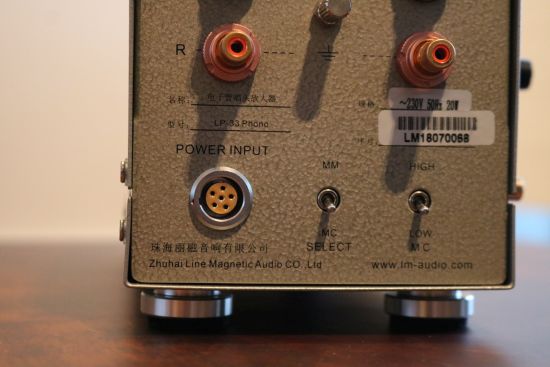
The finish of the casing may not be up to the level of Swiss precision but the units are actually built very solidly and they are reassuringly heavy.
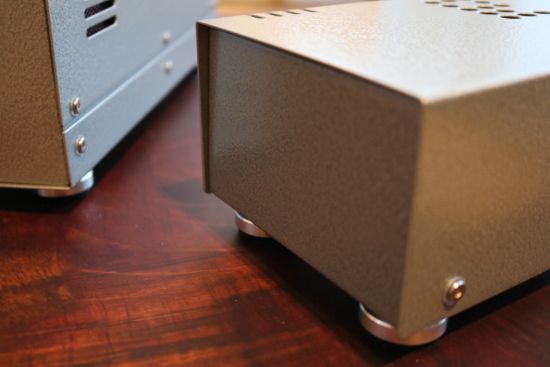
Context
The Vira Aidas Rainbow and the Acoustical Systems Aiwon both have a 0.28mV output and they sounded plenty powerful with the LP-33, while the preamp was very silent. Truth be told, I can’t say that I observed any more noise or hum with my ear close to the speaker than I did with any of the various other phono stages that I used, be they tubed or solid-state. And at normal to slightly louder listening levels, I certainly could not detect any noise from the listening position.
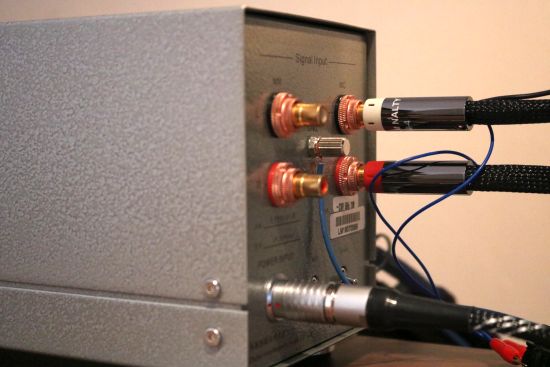
The basis for assessing the LP-33 is the Origin Live Calypso Mk4 turntable with a Vira Aidas Rainbow MC cartridge in its Illustrious arm. The LP-33’s output goes to the Ayon Stealth tube preamp. This preamp’s input impedance is not specified but I assume that it is the same as the company’s Auris II preamp, which is specified at 100 KOhms meaning that the LP-33 will not have a hard time driving the preamp’s inputs. The power amp used is the CH Precision A1.5 and the speakers are the Martin Logan ESL15A’s.
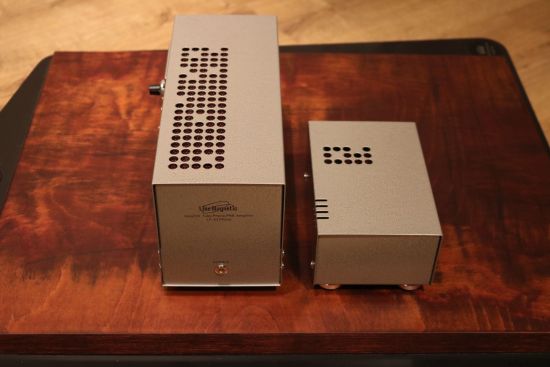
One really cool feature of the LP-33 is that it contains an output level control. With its output level knob set to the maximum, the LP-33 has an unusually loud output level meaning that it could potentially even be used as a standalone phono preamp + preamp straight into a power amp but I did not try this. For my purposes, I set the MC impedance switch to low (which provided the highest output and the most solid sound) and set the volume knob at its midway setting to achieve a similar output as the other phono preamps. For normal listening via an analog preamp, the LP-33’s volume knob will be set somewhere in the middle of its range. If the output level control is passive (which I think it might be) then it follows that the output impedance would vary with the setting of this control but in my tests, this wasn’t at all obvious. Passive volume controls are praised for their purity but feared for the loss of bass, body, or dynamics. During my listening tests, in any event, the sound was dynamic and powerful with very potent bass even when using low output MC cartridges. I powered the LP-33 with a Belden cable with Bals schuko and Oyaide C-004 IEC connector, the same as I do all the other equipment. In hindsight, though, I don’t think the LP-33 needs a particularly upscale power cable and a standard one would also do just fine.
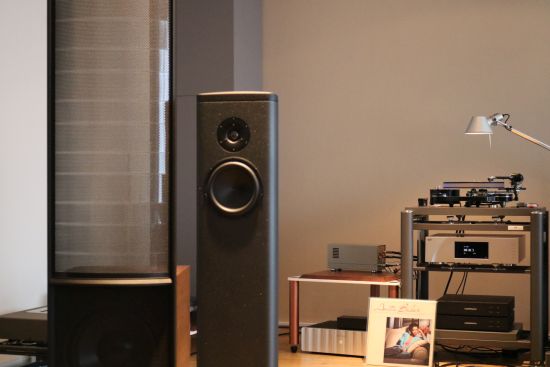
Listening
The LP-33 has seen plenty of use by Frank Suijk in the A Tube High Fidelity showroom so I was confident in giving it some 30 or so minutes to warm up and then start my listening. The manual actually specifies it requires only 10 minutes.
Starting with the Origin Live Calypso Mk4 and with the LP-33 connected via an AudioQuest Water interlink, upon first listening, the LP-33 sounds rich and relaxed yet very powerful with a smooth and fluid treble.
The bass is surprisingly “big”, powerful and deep but initially also lacking in articulation and punch in the upper registers. As it turns out, the AudioQuest Water is not entirely the ideal cable for this phono stage. While it can add a pleasant sonority and fullness to clean-sounding components, in this case, it’s apparently adding too much. The Vermouth Reference brings a considerably more solid bass with a more clearly defined upper register and better articulation overall and it also retrieves slightly more detail in the midrange. The beauty of the Vermouth is that it is a very precise and articulate cable but it retains a full tonality while avoiding any added smoothness and this works very well with the LP-33.
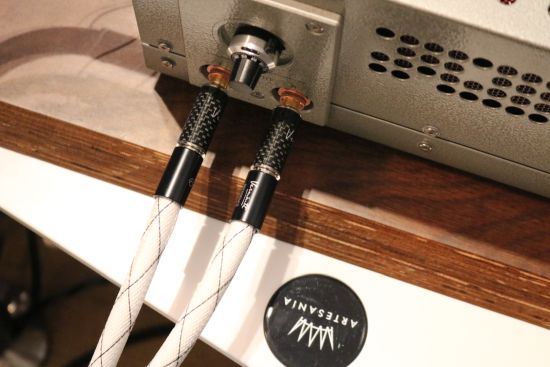
The LP-33’s inherent smoothness makes that it will sound musically pleasing even with very neutral and comparatively barebones-sounding cables such as the Siltech Paris MXT. Indeed, with well-recorded LP’s even the Siltechs fare perfectly well but with leaner to neutral sounding records, I preferred the Vermouths.
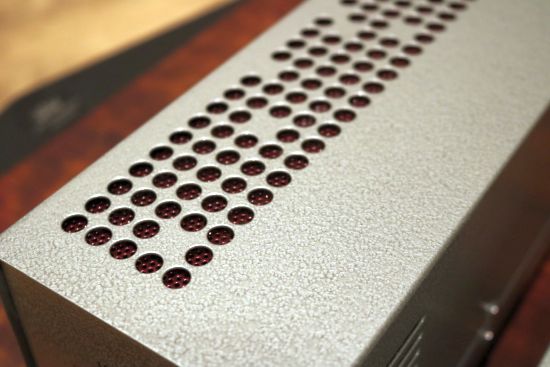
A closeup of the extra shielding inside. The internal rosters are painted in a fetching deep red/copper color
With the right interlink in place, the midrange is still gloriously rich and overall, the LP-33’s sound remains on the warm side of neutral. There’s a pleasant (and expected) lushness to its delivery but without tipping over into mushiness. Although it is not overall as transparent or as revealing as I am used to from costlier products, the LP-33’s entire delivery really is quite lively and dynamic. Along with the great dynamics comes a very convincingly natural timbre with no hint of synthetic tone or electronic signature.
With the Vermouth, the bass is still BIG and full but now there is considerably better articulation and the upper-bass transients are more immediate. Compared to the CH Precision P1, the LP-33’s bass is actually still considerably more voluptuous and while deviating from neutral, with my 80’s electronic music this is absolutely quite entertaining. For instance, Alexander O’Neal’s drum computer and electronic bass on the same-titled album are fatter than I have ever heard them. And I mean “fat” in the best sense of the word. It’s almost vulgar, like pouring lots of gravy over a juicy rib-eye and eating it while being driven in a V12 luxury limousine. In other words, those inherently fat electronic sounds are further enhanced by the LP-33’s voluptuous presentation and the record arguably sounds even better than on the P1. With other music, the euphonic effect can be less ideal. For example, with more rhythm-driven music such as Azymuth where the extra gravy hampers the progression slightly, making the music appear less urgent and more relaxed than it should.
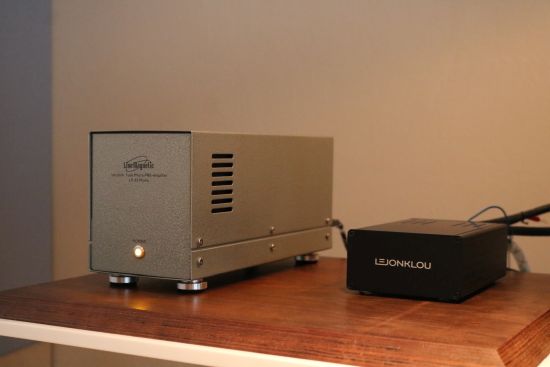
Simultaneously in my system for review is the Lejonklou Entity MC phono stage (review in the making). Being a solid state preamp the Lejonklou sounds very different from the Line Magnetic. The Lejonklou is cleaner, more neutral and more transparent as well as more articulate and direct. It is very fluid and highly refined but less well-textured and less richly saturated and in terms of soundstaging the Lejonklou is wide and well-differentiated but flatter, less 3D. Of course, the lack of tubes will usually do that.
This is not to say that the Line Magnetic outshines the Lejonklou, that is not the case. I feel that both are very good, if very different, examples of great yet still affordable phono stages.
The LP-33 seems to have perfect pacing. I don’t find it to be slow and it is not lacking PRaT but it is more relaxed than most transistor designs and therefore can be perceived as slower. The soundstage is wide and room-filling and Anita Baker’s sonorous voice is positioned more freely within it than with the Lejonklou. Also, her voice seems to possess more body not only tonally but also spatially. With the LM-33, the soundstage seems to be more 3D and that’s a particularly alluring quality. At this point, I noticed that the treble, while fluid and never harsh, is not quite as finely resolved or as airy as with the CH L1 and the Lejonklou. Based on comparing this record on the LM-33 and the Lejonklou, my understanding of the Line Magnetic’s performance was further enhanced. While the critic in me still feels that it lacks some precision and transparency, the LM-33’s soulful presentation sure is captivating and even if more detail and immediacy can be had these sure would not have further enhanced the emotional impact.
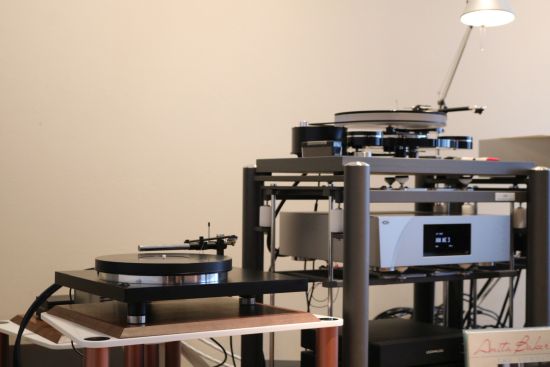
A change of turntable
Besides my resident Origin Live turntable, I have another turntable set up for review, the Holbo Airbearing turntable (review in the making). The Holbo’s platter and tonearm are both air-bearing designs. Fitted with the Acoustical Systems Aiwon, this turntable sounds even more articulate, linear and transparent but also less organic, free-flowing and 3D than the Origin Live when comparing them via the CH Precision P1 phono stage. Here, I figured that the LP-33’s tube goodness would help the turntable become more like the Origin Live but that was not the case. While the tube preamp did indeed add a dose of golden richness to the sound and it de-sterilized the sound to some extent, it did not overshadow the turntable’s basic character.
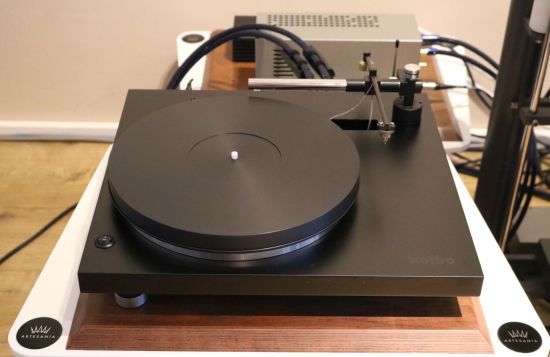
There are tube preamps that sound cleaner than typical transistor designs. But many tube-based preamps add a certain character to the sound, call it richness, texture, tone, body, substance, or even “life”. In any event, while in many cases a deviation from utter neutrality, often, this functions in a positive manner to move away from an overly clean sound and making the music more relatable. For many music lovers, it is precisely this extra character that is the reason for choosing tubes in the first place.
The Line Magnetic may indeed superimpose some character onto the performance but if that means that it makes the records sound richer and more luscious then I’d bet that many music lovers might prefer that to a more bare-bones sound like so many competing phono stages offer. Ultimately, I can analyze all I want but there is no denying my own emotional response as I witnessed my foot wiggle to the music and at some point even standing up to – cough – make some dance moves. And I don’t even dance! Go figure. The LM-33 is certainly capable of captivating and highly involving music-making.
Conclusion
The LP-33 has a big, euphoric and relaxed yet powerful and dynamic delivery that is forgiving, emotionally involving and very satisfying. Not having looked up the price of the LP-33, for some reason, I was under the impression that it would hover around the 3000-euro mark and I also reviewed it with that value in mind. At my imaginary 3000-euro mark, I felt that the LP-33 is not perfect but offers good value. Then I found out that it actually retails for 1989 euros! That being the case, I genuinely feel that the LP-33 offers a slice of tube heaven at a remarkably sane price. At that price level, you can get a different perspective but I doubt that you could do better overall, especially if you are looking for a tube phono preamp.
External Links
Manufacturer: LM-audio.com
Official EU Distributor: Line-Magnetic.eu
Official NL Dealer: A Tube High Fidelity
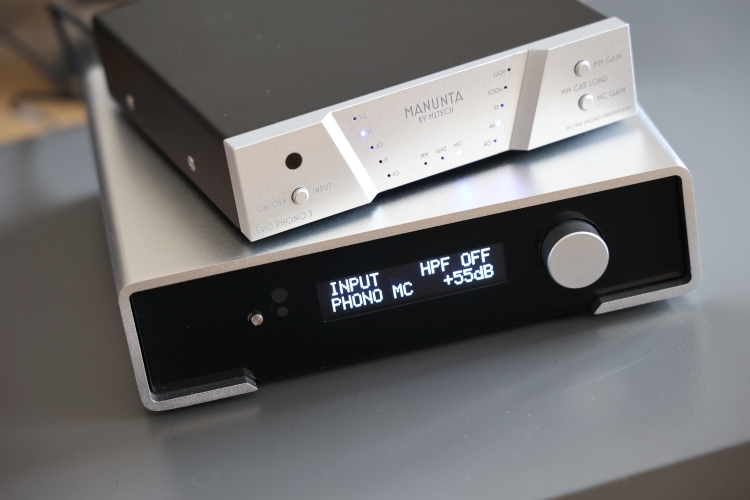
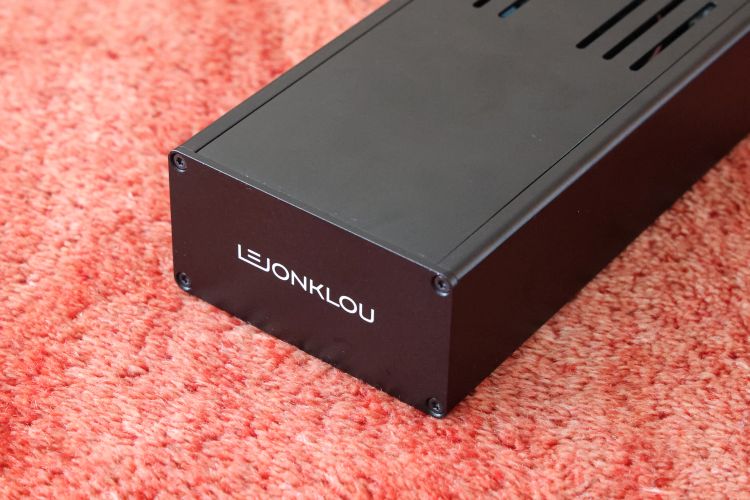
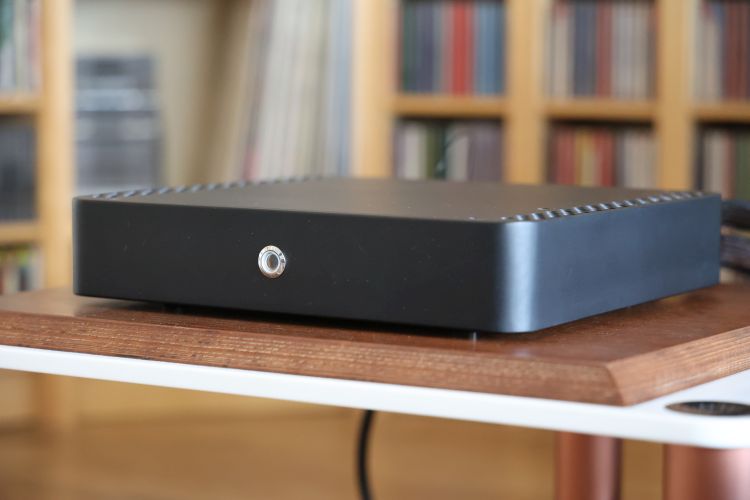
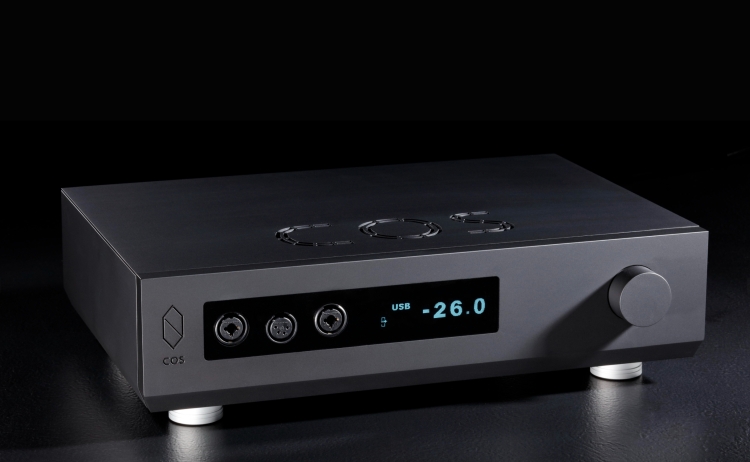
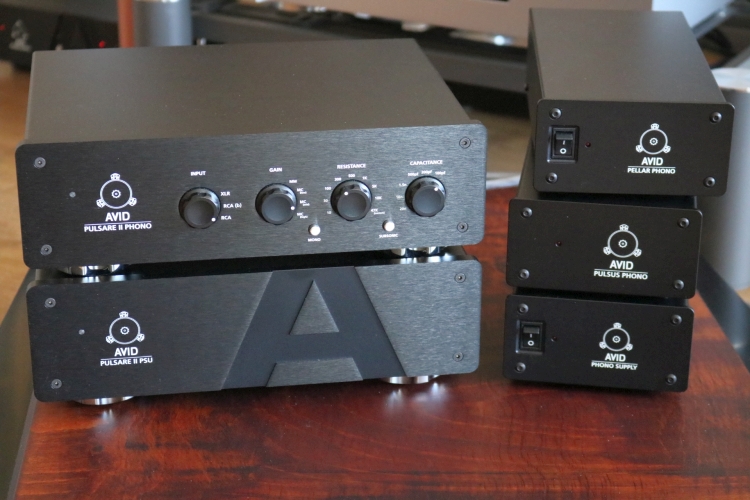
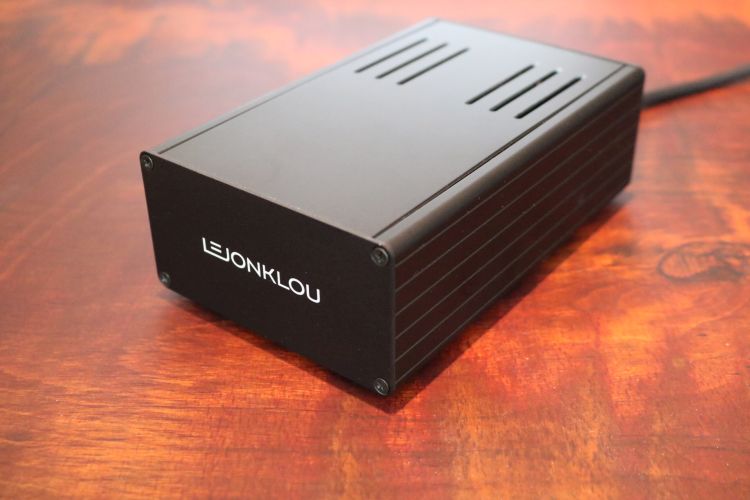
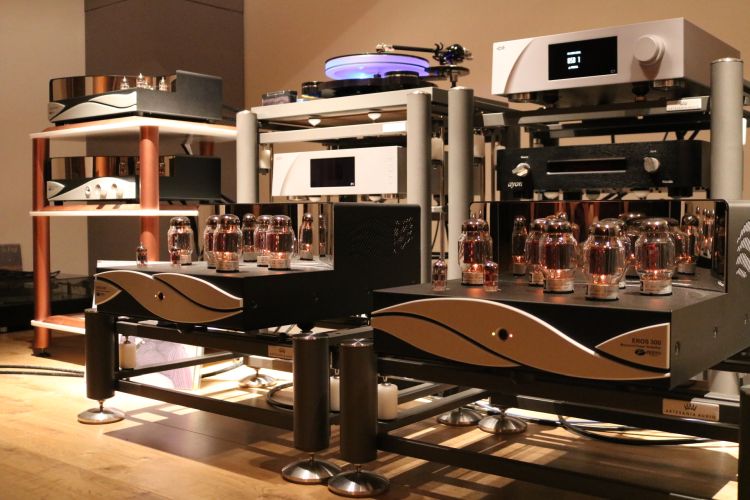
Thanks for this review.I think it is the first one of this interesting phonostage.It would be interesting to know (if you remember) how this one compare to Sw1x LPU 1 …
Hi Denis, I have the SW1X LPU-1 in the other room but have not compared it directly as I was using MC cartridges only. However, as I know the SW1X very well, I can say that it is a very different beast than the LM. The latter has a more tube-typical lushness and liquidity while the SW1X is more like a really good transistor phono preamp minus the flatter, more static delivery that typical transistor-based phono stages in its price class tend to have. In short: the LM excels in liquidity and warmth and the SW1X excels in neutrality, agility and transient sharpness.
Thank you Christiaan for your review. I am currently researching a suitable pre-amp for the LM-216IA. I know, the sound depends on the whole setup, so I wanted to ask, if the aspect you detected of “making ryhthem-driven music appear less urgent” is a general thing with the LP-33. I am trying to built a system best for listening to Brazilian Funk, so I am really torn between your review and the suitability for the LM-216IA. Or do you know a pre-amp that would help the LM-216IA bring Brazilian music come alive best? Thank you in advance and keep up the great work.
Hi Max, unless you are specifically after that relaxed, big, rich and “fat” kind of bass, I would advise adding a solid-state phono stage to your LM-216IA. Typically, they excel in pacing and transient behavior which I think is what you are after.